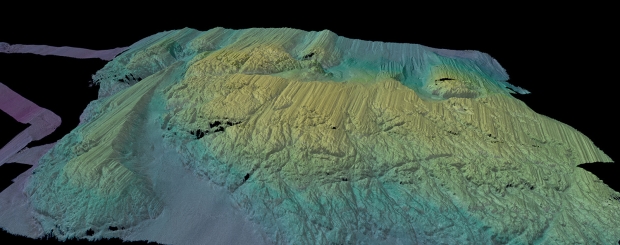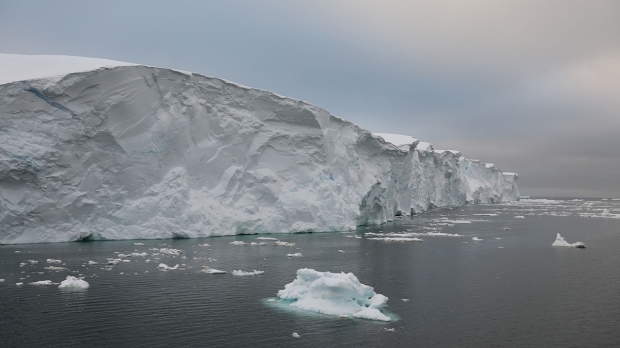A study on Thwaites Glacier titled "Rapid retreat of Thwaites Glacier in the pre-satellite era" has been published in the journal Nature Geoscience.
Researchers led by the University of South Florida's College of Marine Science (USF CMS) have created the first-ever high-resolution map of the seafloor in front of the Thwaites Glacier of West Antarctica, also known as the Doomsday Glacier. The glacier is roughly the size of Florida and is quickly retreating as it loses ice to the ocean. It would bring an expected sea level rise of between three to ten feet (0.91 to 3.05 meters) if the glacier and surrounding icy basins were to melt into the ocean entirely.
When viewed on geological timescales, the rate the glacier is retreating shows it is effectively collapsing. Mapping the ocean floor revealed a collection of over 160 parallel ridges, created as the leading edge of the glacier retreated, shifting up and down slightly with the tide. The researchers found that the current rate of retreat is slower than previously unknown periods where the rate of the retreat was much faster.

A 3D-rendered view of the multibeam bathymetry (seafloor shape) colored by depth, collected by Ran across a seabed ridge, just in front of Thwaites Ice Shelf. (Credit: Alastair Graham/University of South Florida).
Over less than six months, sometime in the last 200 years, the glacier retreated from the seabed at a rate exceeding 2.1 kilometers (1.3 miles) per year, which is more than double the rate satellites have observed between 2011 and 2019. This challenges the idea that Antarctic ice sheets are sluggish in responding to change, and as Alastair Graham from USF CMS noted, "just a small kick to Thwaites could lead to a big response."
"Thwaites is really holding on today by its fingernails, and we should expect to see big changes over small timescales in the future - even from one year to the next - once the glacier retreats beyond a shallow ridge in its bed," said marine geophysicist and study co-author, Robert Larter, from the British Antarctic Survey.
You can read more from the study here.



